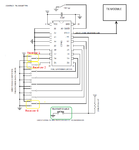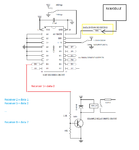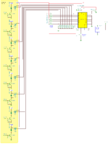officework13
Newbie level 5
i am trying to help a local club with a wireless custom application that i can possibly do for about $300 and my time for free, vs the vendor purchased product for about $2000.
i am looking at doing a project using already built components of a rf transmitter and receiver (ASK, OOk and 433Mhz, and i believe it is SAW). i will be transmitting a signal to 8 receivers which are on a relay to momentarily turn on the motor.
i need the ability of all 8 channels to transmitt signal simultaneously. - i also need the ability to wire the transmitter to the source.
i need an 8 channel transmitter (can be either 1 8 channel, 2-4channel or 8-single channel transmitters)
so i need to know, will an 8 channel transmitter work like this or will it need 8 single channel transmitters.
if i go with 8 single transmitters (the one i am looking at) it does not have an encoder/decoder. does this make it less secure. or do you only need the encoder/decoder when you are transmitting/receiving for more than 1 channel.
thanks
i am looking at doing a project using already built components of a rf transmitter and receiver (ASK, OOk and 433Mhz, and i believe it is SAW). i will be transmitting a signal to 8 receivers which are on a relay to momentarily turn on the motor.
i need the ability of all 8 channels to transmitt signal simultaneously. - i also need the ability to wire the transmitter to the source.
i need an 8 channel transmitter (can be either 1 8 channel, 2-4channel or 8-single channel transmitters)
so i need to know, will an 8 channel transmitter work like this or will it need 8 single channel transmitters.
if i go with 8 single transmitters (the one i am looking at) it does not have an encoder/decoder. does this make it less secure. or do you only need the encoder/decoder when you are transmitting/receiving for more than 1 channel.
thanks


